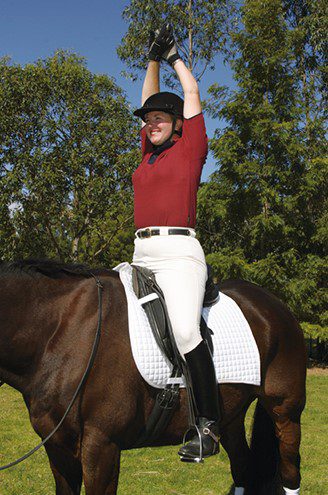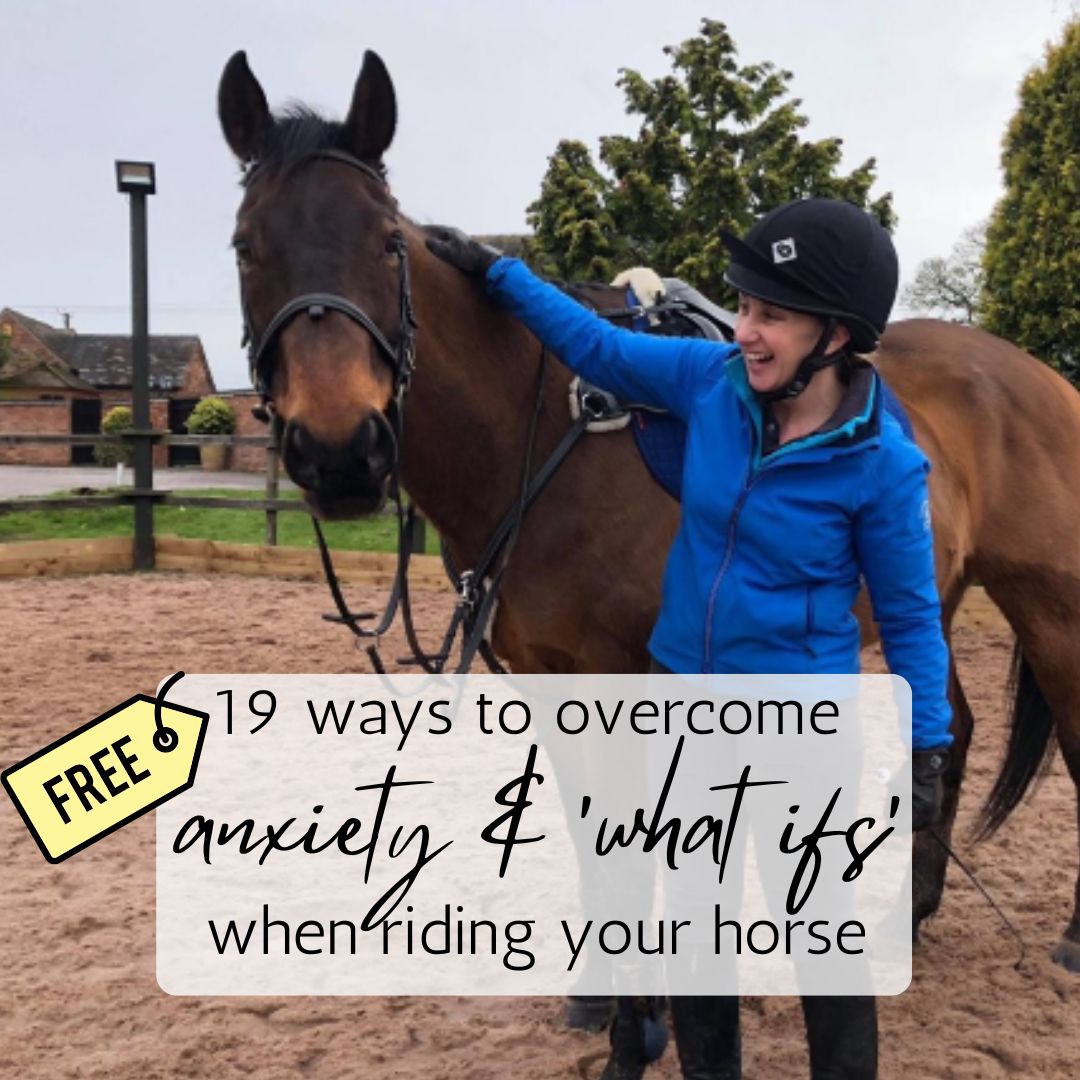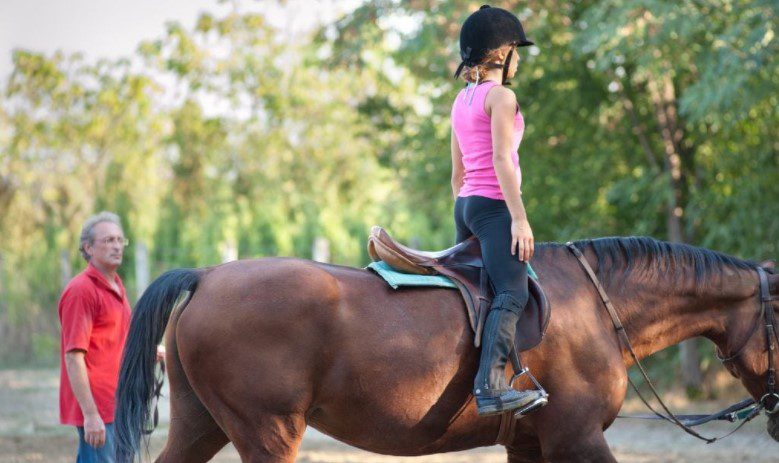
Stretching whilst in the saddle can be highly beneficial for horse riders. It can help to improve suppleness, flexibility, and balance ensuring you have the ability to ride in harmony with your horse and be as one. Stretching whilst in the saddle is just as important as stretching out of the saddle and taking part in both can be a good combination.
Pelvic and hip flexibility is particularly important for horse riders and is a crucial part of effective riding. Other areas of the body such as the shoulders and back can also benefit from regular stretching whilst in the saddle and can significantly improve posture.
There are many exercises you can carry out whilst in the saddle which will help to improve your overall rider position and allow your body to move in harmony with your horse. In turn, a flexible, supple, and balanced rider can improve their horse’s way of going and create unity in movement.
Let’s take a closer look at 7 of the very best stretches you can carry out on horseback to help both you and your horse.
1. Head Rolls
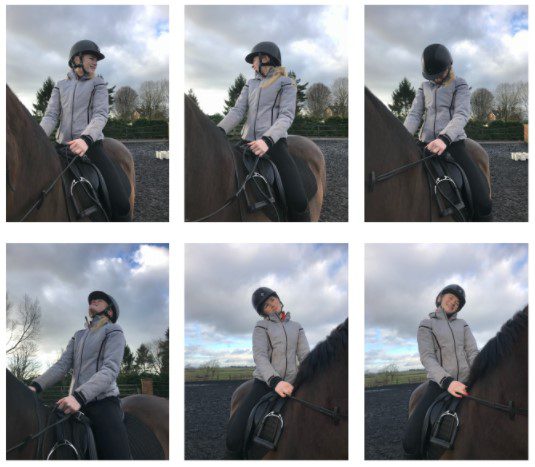
- Turn your head slowly, looking to the left then right.
- Drop your chin down so it touches your chest, then lift your chin so you are looking towards the sky.
- Tilt your head each side, so that your ear moves closer to your shoulder (on the same side!).
2. Shoulder Shrugs

- Shoulder shrugs – lift your shoulders directly upwards towards your ears. Pause, then roll your shoulders backwards (in an imaginary half circle), and drop them a little lower each time.
- Straighten one arm (or both arms, if safe to do so), and point your fingers towards the sky, so that your arm is straight and next to your ear. Slowly rotate your arm backwards in a giant circle to open up and relax your shoulders.
3. Arm Stretches
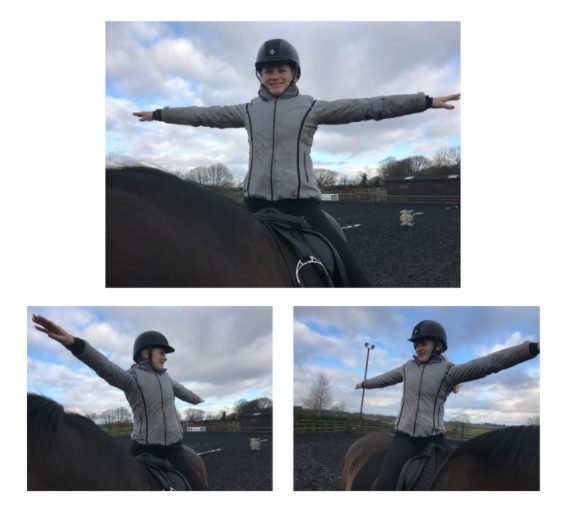
- Put both arms straight out, at shoulder height to each side (like an aeroplane). Slowly turn at your waist so your head, shoulders, arms, and upper body are facing left. Pause, then return to the centre, breathe and repeat the opposite way.
4. Knee and Leg Tucks
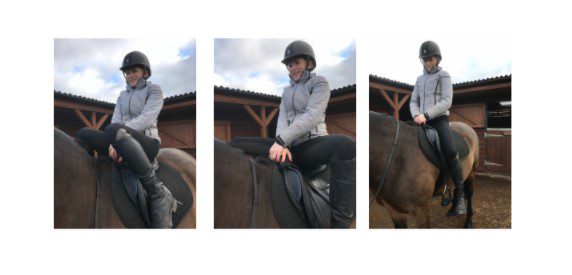
- While placing a hand on the front of the saddle, without your stirrups, lift both knees as high as you can in front of you, as if you are a jockey.
- Pause, sit tall, and at the same time open both knees away from the saddle sideways, so you are sat a bit like a frog!
- Pause, breathe, then quietly and slowly lengthen your legs back and down, allowing your heel to fall and your toes to point forwards.
- Gently close your calves around your horse’s ribcage, just behind the girth.
- Each time you do this, your leg should end up in the perfect position, with the ball of your feet in line with the girth.
5. Ankle Rolls
- Without your feet in the stirrups, correct your position and circle both feet at the same time in towards your horse, i.e. your right foot will rotate anti-clockwise, and your left foot will rotate clockwise.
6. Quad Stretches
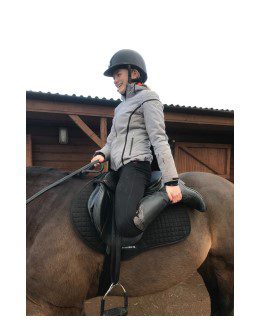
- Without your feet in the stirrups, bend one leg at the knee and quietly hold your ankle. Keep your core abdominal muscles engaged, and don’t allow yourself to hollow your back; stay sitting tall and in good posture!
7. Legs Away!
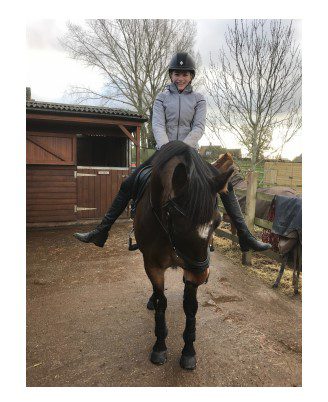
- Without your stirrups find a correct position, then at the same time, lift both legs away from the saddle from the hips so that you lift your thighs of the saddle, not just from below the knee (that’s easy!). You might find that you can only lift a couple of inches from the saddle, but that’s OK.

